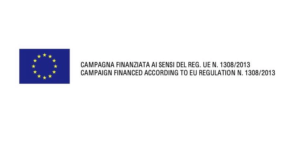When it comes to wine from Italy’s northwestern Piedmont region, the Barbera d’Asti that has long been a staple for the community of winemakers in Monferrato, has become so much more than a vino da tavola, or table wine. Barbera d’Asti has grown in recognition over the last two decades and it is now a DOCG of its own, giving international renown to its producers.
Piedmont is set on rolling hills, against a dramatic backdrop of the Alps along the border of France and Switzerland. Here, chilly mornings blanketed in fog (nebbia in Italian) give way to sun-splashed afternoons and cool evenings, ideal for producing concentrated, vivid wines.
Monferrato, Barbera d’Asti DOCG’s area of origin, sits in the southeastern reaches of Piedmont, where gentle hills are what’s left of a 2-million-year-old seabed. It’s not uncommon to find ancient seashells in the sandy and calcareous soils of the vineyards. This has proven to be the ideal alchemy for Barbera, the region’s most widely planted grape, which produces high acid, low tannin wines with vibrant fruit and has an immense compatibility with food.
The bountiful grape dates back to the 14th century, where it’s first mentioned as Grisa by Pietro de’ Crescenzi in his writings on horticulture and agriculture. Fast forward to 1792 and Barbera is officially recognized as a Piedmontese grape in the first iteration of “Ampelografia,” written for the Agriculture Society of Turin. Studies show that the town of Monferrato may well be the native home of the grape. In 1970, Barbera d’Asti became a DOC (Denominazione di Origine Controllata) appellation, cementing its status as a quality wine, worthy of recognition.
Then in 2008, Barbera d’Asti became a DOCG, the highest quality level in Italian wine law. The G, which stands for garantita (guaranteed), means that wines are both produced in adherence to the appellation rules and have passed a wine-quality tasting panel.
Now there are 167 municipalities that are allowed to produce DOCG Barbera d’Asti, which requires wines to be made with at least 90 percent Barbera and with up to 10 percent of other non-aromatic red grapes of the region, typically Freisa, Grignolino and Dolcetto. To obtain the Superiore classification, the wines must be made from a smaller selection of high-quality grapes and must have a minimum of 12.5 percent alcohol content. Wines are aged in the cellar for a mandatory period of 14 months, with six of those spent in wooden barrels. Producers sometimes age the Superiore in smaller wooden barriques, which provide vanilla and baking spice notes to the wine, while also giving it aging potential up to 20 years.
What makes Barbera d’Asti so unique? Just ask Filippo Mobrici, president of the Consorzio Barbera d’Asti e Vini del Monferrato. “Body, structure, flavor, minerality, and acidity are its distinctive and differentiating characteristics.” He goes on to say that “another fundamental element are the producers, those people who have believed in this grape and in this territory, working hard to bring this variety to the top, reserving their best efforts and vineyards to it – an act of dedication like nowhere else.”
When you’re looking for a Barbera d’Asti producer, you’ll find options that please any wine drinker. Ranging from fresh and fruity wines aged in stainless steel to the rich, vibrant Barbera given time to integrate with French oak barrels, here are two different options under the Barbera d’Asti DOCG classification to check out next time you’re at the wine store:
This article is sponsored by Consorzio Barbera d’Asti e Vini del Monferrato.

